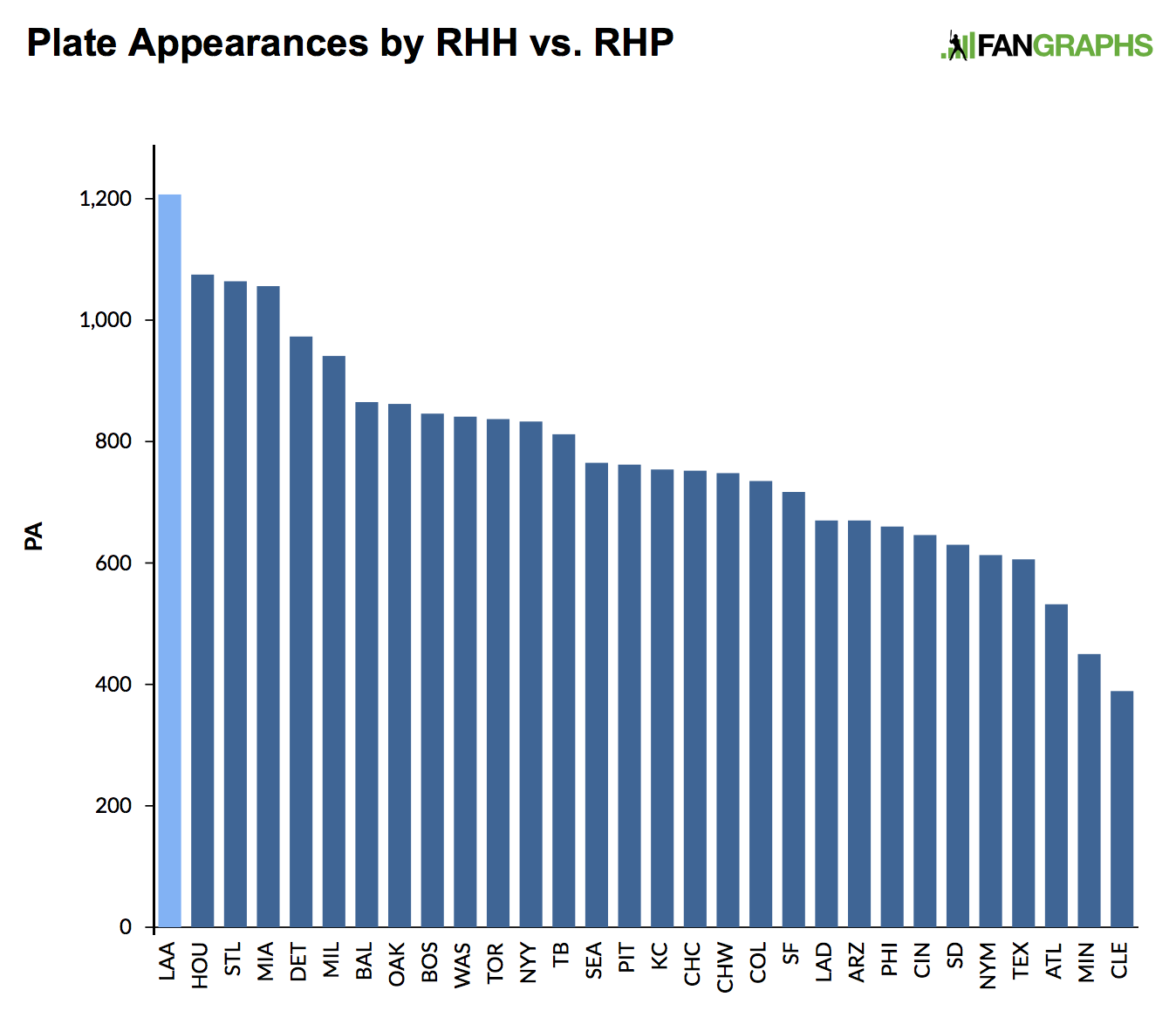Trout, Davis, and the Largest Seasonal WAR Differentials
As I noted earlier today, Orioles slugger Chris Davis, who through the Orioles’ first 67 games has already dug himself a -1.9 WAR hole, is on pace for the worst season ever by that measure, -4.6 WAR. At the other end of the spectrum, Mike Trout is having not just the best season of his already amazing career, but one for the pantheon. His 5.7 WAR through the Angels’ first 69 games prorates to 13.4 over a full season, which would rank third all-time, behind the 1923 and 1921 seasons of Babe Ruth (15.0 and 13.9 WAR, respectively), making Trout’s season “only” the best in the past 95 years. What a slacker.
Even if that’s the case, Trout and Davis could combine for the largest WAR differential between two position players in one season, a chasm wider than the Grand Canyon. Below are the 20 largest single-season gaps, with some player-seasons, such as Ruth’s 1920, included more than once. I’ve also included two hypothetical end-of-season figures for Trout and Davis: their WAR differential based both on current pace and also our Depth Chart projections.
| Season | Player 1 | Team | WAR | Player 2 | Team | WAR | Dif |
|---|---|---|---|---|---|---|---|
| 2018 | Mike Trout PACE | Angels | 13.4 | Chris Davis PACE | Orioles | -4.6 | 18.0 |
| 1923 | Babe Ruth | Yankees | 15.0 | Shano Collins | Red Sox | -2.5 | 17.5 |
| 1920 | Babe Ruth+ | Yankees | 13.3 | Ivy Griffin | Athletics | -2.8 | 16.1 |
| 1920 | Babe Ruth+ | Yankees | 13.3 | Chick Galloway | Athletics | -2.4 | 15.7 |
| 2002 | Barry Bonds | Giants | 12.7 | Neifi Perez+ | Royals | -2.9 | 15.6 |
| 1927 | Babe Ruth | Yankees | 13.0 | Ski Melillo | Browns | -2.5 | 15.5 |
| 1924 | Babe Ruth | Yankees | 12.5 | Milt Stock+ | Robins | -2.7 | 15.2 |
| 1924 | Rogers Hornsby | Cardinals | 12.5 | Milt Stock+ | Robins | -2.7 | 15.2 |
| 1927 | Lou Gehrig | Yankees | 12.5 | Ski Melillo+ | Browns | -2.5 | 15.0 |
| 2001 | Barry Bonds | Giants | 12.5 | Peter Bergeron | Expos | -2.4 | 14.9 |
| 1931 | Babe Ruth | Yankees | 10.7 | Jim Levey | Browns | -3.3 | 14.0 |
| 1993 | Barry Bonds+ | Giants | 10.5 | David McCarty | Twins | -3.1 | 13.6 |
| 1929 | Rogers Hornsby | Cubs | 11.1 | Tommy Thevenow | Phillies | -2.4 | 13.5 |
| 1905 | Honus Wagner | Pirates | 10.8 | Fred Raymer | Beaneaters | -2.4 | 13.2 |
| 1912 | Tris Speaker | Red Sox | 10.6 | Frank O’Rourke | Braves | -2.6 | 13.2 |
| 1928 | Babe Ruth | Yankees | 10.6 | Doc Farrell | Braves | -2.6 | 13.2 |
| 1930 | Babe Ruth | Yankees | 10.5 | Fresco Thompson | Phillies | -2.7 | 13.2 |
| 1993 | Barry Bonds+ | Giants | 10.5 | Ruben Sierra | Athletics | -2.6 | 13.1 |
| 1993 | Barry Bonds+ | Giants | 10.5 | Luis Polonia | Angels | -2.6 | 13.1 |
| 1927 | Rogers Hornsby | Giants | 10.4 | Ski Melillo+ | Browns | -2.5 | 12.9 |
| 2002 | Alex Rodriguez | Rangers | 10.0 | Neifi Perez+ | Royals | -2.9 | 12.9 |
| 2018 | Mike Trout PROJ | Angels | 10.8 | Chris Davis PROJ | Orioles | -1.7 | 12.5 |
Seven separate Ruth seasons are represented here, along with three apiece from Hornsby and Bonds. Aside from the projection of Trout, only one other post-World War II player besides Bonds is represented above on the good side of things, namely A-Rod in 2002. That’s just one small set of data points related to the fact that the spread of talent between the best and worst players is much less now than it was 75 or 100 years ago and that leagues today are stronger than the ones of decades past.
Ruth hit “only” 41 homers during his 15.0-WAR 1923 season, but via his .393/.545/.764 (231 wRC+) line, he set career highs in the first two categories even while somehow failing to win a batting title. (The Tigers’ Harry Heilmann hit .403.) His dance partner from the 1923 season was Collins, a light-hitting outfielder who batted .231/.265/.289 for a lousy 43 wRC+ that year and was six runs below average on defense. To the extent that Collins has any other claim to fame, it’s apparently that he was the only player in the White Sox’ starting lineup for Game One of the World Series who didn’t wind up either banned for life as part of the Black Sox scandal or elected to the Hall of Fame (as Eddie Collins and Ray Schalk were). Ruth’s 1931 season (.373/.495/.700, 46 HR) is paired with Levey, the Browns shortstop who actually had an even worse season (1933, -4.0 WAR) that represents the record Davis is trying to avoid.
As for Trout, to date, the largest WAR gap of his career is 13.9 WAR, from 2013, when he set a career best with 10.1 WAR and Yuniesky Betancourt turned in a -1.8 WAR clunker. Even if Davis didn’t play another game this year, Trout would only need to add another 4.5 WAR over the Angels’ 93 remaining games to surpass that previous high. While he and Davis don’t have much margin for error in surpassing Ruth and Collins, it still boggles the mind that we could be seeing such extremes in the same season.


